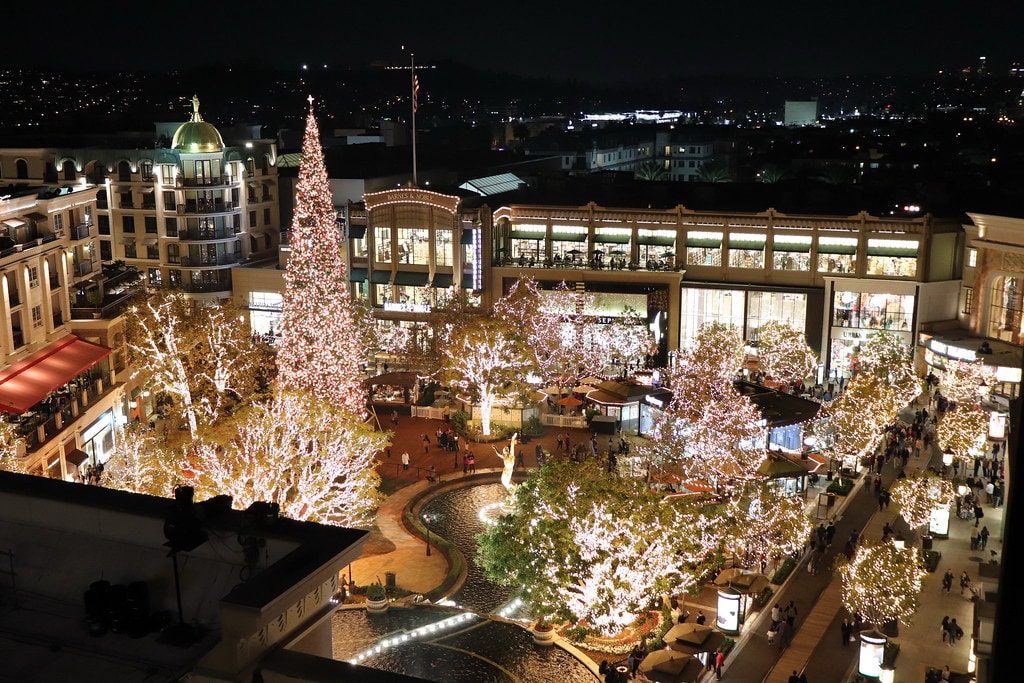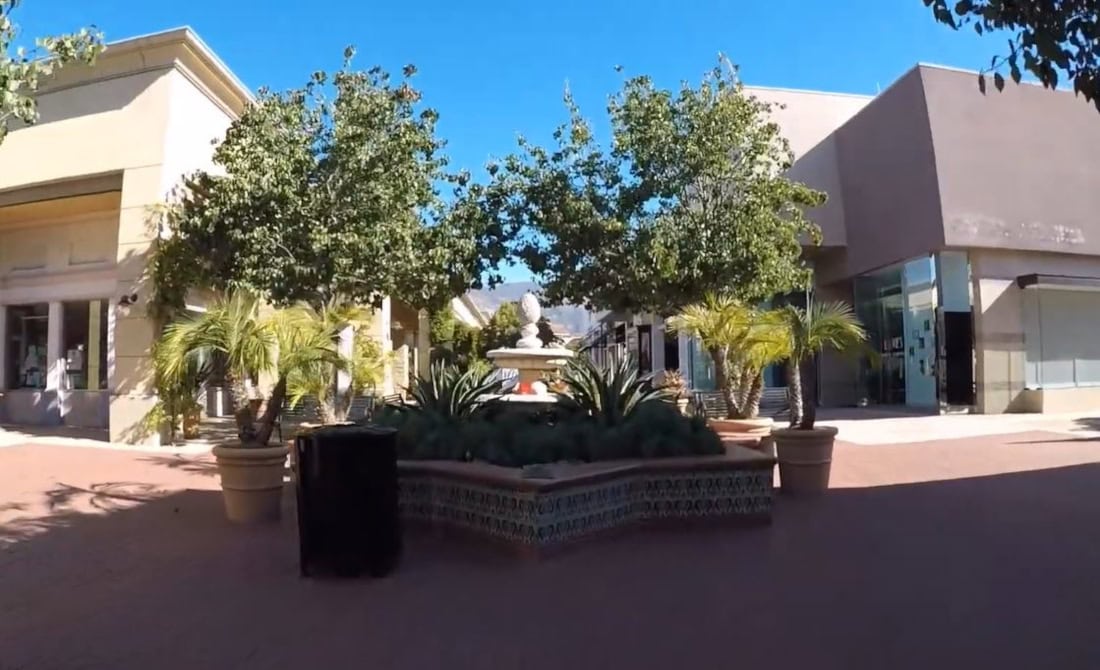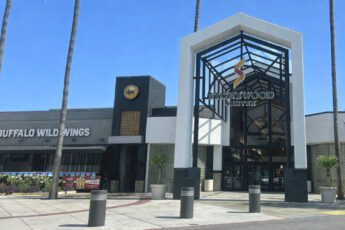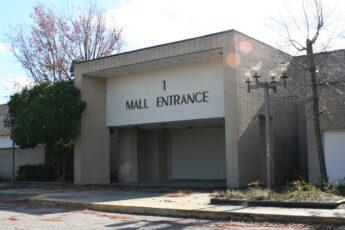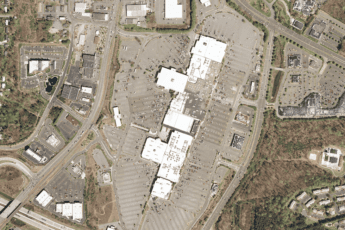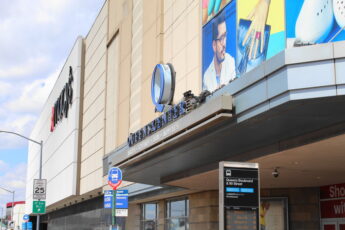Introduction to Panorama Mall
Panorama Mall, located in Panorama City, Los Angeles, opened its doors on October 10, 1955. It was originally called the Broadway-Valley shopping center, designed by architect Welton Becket, whose work gave it a modern, streamlined look.
The mall started as an open-air strip with 89,000 square feet of retail space, drawing early attention from shoppers eager to explore its new stores.
The first major anchor was The Broadway, a well-known department store that took up 226,000 square feet of space. Alongside it, the center featured popular brands like Woolworth, Kinney Shoes, and Silverwoods.
Historical Milestones and Changes (1950s - 1980s)
After its initial opening in 1955, Panorama Mall quickly became a focal point for retail in the San Fernando Valley. By the early 1960s, the mall had already begun expanding.
In 1961, both Montgomery Ward and J.W. Robinson's opened, adding to the variety of department stores.
Montgomery Ward, a two-story, 154,000-square-foot building, was a significant addition, and Robinson's opened its doors in June of the same year, providing shoppers with even more high-end retail options.
The mall continued to grow, and by 1964, a new anchor store, Ohrbach's, was added to the mix. This two-story department store took up 115,000 square feet and cost $5 million to build - quite the investment for the time.
As more stores joined, the area was rebranded as the "Panorama City Shopping Center," boasting 86 stores by the mid-1960s. At this point, it was one of the few locations in the region where shoppers could visit four major department stores within a single block radius.
However, by the 1970s, competition from newer malls in the Valley, like Sherman Oaks Fashion Square and Northridge Fashion Center, began to affect Panorama Mall's business.
Retailers and developers had to think on their feet, and by 1979, the mall was sold to the Macerich Company and Connecticut General Mortgage and Realty Investments.
A $7 million renovation followed, enclosing the mall and giving it a much-needed facelift. This transformation connected the retail space with The Broadway, adding a modern stainless steel sculpture by artist Sebastian Trovato.
Decline and Subsequent Revitalization (1990s - 2020)
Despite the efforts to modernize, the early 1990s presented challenges for Panorama Mall. By this time, many shoppers were drawn to more upscale shopping centers.
Malls like the Sherman Oaks Galleria and other Valley landmarks began to overshadow Panorama Mall, leading to a slow but steady decline in business.
However, in 1997, Walmart moved into the old Broadway space, breathing new life into the mall and attracting a new wave of shoppers.
The closing of major department stores, like Montgomery Ward, in 2001 left large vacancies that took time to fill.
In 2005, the mall underwent another renovation. The owners invested $1 million into updating its look and improving its infrastructure.
Though it wasn't a drastic change, the renovation helped modernize the mall's interior and kept it competitive in a rapidly evolving retail landscape.
Throughout the 2010s, Panorama Mall found its niche catering to the predominantly Hispanic community in Panorama City.
Walmart and Curacao, another major anchor, became staples, and the mall continued to serve the needs of the local community.
In addition to retail stores, the mall began hosting cultural events and regional promotions, positioning itself as more than just a shopping destination - it was now a community hub.

Current Expansion and Future Plans (2023-2024)
In 2023, Panorama Mall's owners announced an ambitious redevelopment plan to transform the property into a dynamic mixed-use center, now called Panorama City Center. This project aims to revitalize the mall by introducing a blend of retail, housing, and public spaces.
The new development, covering 17 acres, will include shopping areas, sit-down restaurants, health and wellness services, and spaces for events.
This change is seen as an opportunity to breathe new life into the heart of Panorama City and make the area a bustling hub for both residents and visitors.
One of the key features of this redevelopment is its focus on accessibility. The site will be conveniently located near the future Metro Van Nuys Line and the North San Fernando Valley Line, expected to be operational by 2028.
These transportation links will make Panorama City Center one of the most accessible spots in Los Angeles, further encouraging foot traffic. By making the area easier to reach, developers hope to attract a wider range of visitors and bring fresh economic activity to the region.
The mixed-use environment at Panorama City Center will offer a range of housing options, from affordable to market-rate units.
This inclusion of residential spaces will create a "live-work-play" atmosphere, allowing residents to enjoy shopping, dining, and entertainment without leaving the neighborhood.
Landscaped paths and pedestrian-friendly areas will provide a welcoming environment, making it a vibrant, family-friendly destination for both locals and tourists looking for things to do in Panorama City, CA.
While there have been discussions and rumors about Panorama Mall's future, including its temporary closure, the redevelopment plans indicate that the mall will eventually reopen with a new structure.
The project has received considerable local attention, and some community members have concerns about the timeline and the impact of the redevelopment.
Key Events and Stakeholder Involvement
Extensive community involvement has shaped the transformation of Panorama Mall into Panorama City Center.
Since early conversations began in 2016, developers have actively engaged with local stakeholders, including the Panorama City Neighborhood Council and the Panorama Chamber of Commerce.
These discussions have been crucial in ensuring that the redevelopment aligns with the community's needs and desires.
Primestor, the property management company, has made it a point to gather feedback from residents and businesses alike to create a space that reflects Panorama City's unique cultural heritage.
Several public meetings have been held to discuss various aspects of the project. In 2023 alone, multiple gatherings took place, where topics such as sustainability, local hiring programs, and housing affordability were addressed.
These events allowed the community to voice their opinions on important issues, such as the impact of construction, parking availability, and safety measures.
The project has also created new opportunities for local businesses and workers. By focusing on local hiring, both for construction and retail positions, the development will generate new jobs and boost the local economy.
As Panorama City Center takes shape, it aims to serve as a model for urban redevelopment, showing how thoughtful planning and community engagement can transform a traditional shopping mall into a thriving, multifaceted urban center.



